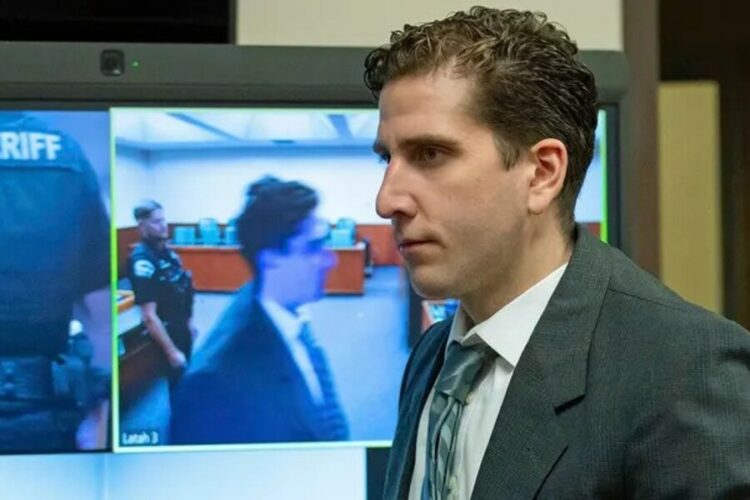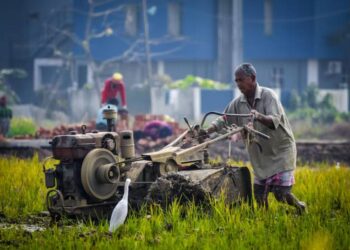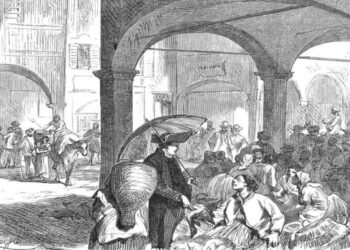On November 13, 2022, the tranquil college town of Moscow, Idaho was shattered by the brutal stabbing deaths of four University of Idaho students in an off-campus home. The prime suspect, Bryan Kohberger, a 29-year-old PhD student of criminology at Washington State University, has offered a peculiar alibi involving nocturnal drives aimed at stargazing, which his defense insists on as proof of his non-involvement in the heinous crime.
Kohberger’s legal representation has submitted statements and plans to present technical evidence suggesting that Kohberger was miles away from the crime scene, indulging in his routine late-night drives to view “the moon and stars”. These claims are set against the backdrop of accusations that place him at the murder scene following the discovery of DNA evidence and surveillance footage linking his vehicle to the vicinity of the killings.
The Night Of November 13
On the night of November 13, 2022, Bryan Kohberger asserts he was not lurking in the shadows near the Moscow, Idaho crime scene but was instead over 30 miles away, engaged in a solitary drive through the less-traveled roads south of Pullman, Washington.
His destination, Wawawai Park, is notably distant from Moscow—about a 40-minute drive under normal conditions. This detail is pivotal, introducing a significant discrepancy in the timeline prosecutors have pieced together, suggesting Kohberger could not have been at two places at once.
The defense’s documentation claims that during the crucial early hours when the brutal stabbings occurred, Kohberger’s cell phone data painted a picture of his route that starkly contrasts with the prosecution’s assertions.
According to these records, his phone did not cross the eastbound paths of the Moscow-Pullman Highway, which would have been the most direct route to the crime scene from his alleged location.
To bolster their case, the defense is poised to bring forth an expert in cell phone tower data, who is expected to confirm that the signals emitted by Kohberger’s phone align with his claimed whereabouts.
This testimony is intended not only to verify the route that Kohberger’s phone traveled that night but also to challenge the reliability of the surveillance footage that purportedly placed his vehicle near the victims’ home at the time of the murders.
This expert evidence aims to create reasonable doubt about Kohberger’s presence near the crime scene, suggesting that the phone data, which the defense claims is precise and reliable, can conclusively prove his physical location, thereby exonerating him from the accusations.
The defense strategy hinges on demonstrating that Kohberger was physically incapable of committing the crimes due to the geographic and temporal impossibilities presented by his alibi.
Forensic And Digital Footprints
At the heart of the prosecution’s case against Bryan Kohberger are the DNA traces found at the crime scene, which purportedly match Kohberger’s genetic profile. This critical evidence is bolstered by surveillance footage capturing a white Hyundai Elantra, resembling Kohberger’s car, circulating near the victims’ residence shortly before the murders were committed. Additionally, cell phone pings place Kohberger’s mobile device in the proximity of the crime scene at key times, directly contradicting his stargazing alibi.
Despite this, Kohberger’s defense challenges the prosecution’s claims on several technical grounds. They argue that the DNA evidence might not be as incontrovertible as suggested, pointing to possible issues with how the DNA samples were collected, stored, and analyzed. This argument extends to questioning the accuracy and handling of geolocation data from Kohberger’s phone, insinuating that these could have significant errors affecting their reliability.
The defense also raises concerns about procedural errors that may have compromised the integrity of the evidence. They suggest that these potential flaws in the evidence collection and preservation processes could significantly undermine the DNA and digital data linking Kohberger to the scene, advocating for a cautious and critical examination of the forensic methods and results presented by the prosecution.
This strategy not only aims to discredit the evidence provided but also to plant seeds of reasonable doubt among the jurors regarding the accuracy and validity of the forensic conclusions drawn.
Legal Proceedings And Community Impact
Since his arrest on December 30, 2022, after a seven-week manhunt that concluded at his family’s home in Pennsylvania, Kohberger’s legal team has vigorously argued against the solidity of the charges.
They have attempted to have the case dismissed on grounds of insufficient evidence and have made multiple requests to delay the trial and change the venue, citing concerns over impartiality and the extensive public and media scrutiny in Idaho.
The ongoing delays and lack of decisive progress in the trial proceedings have exacerbated the victims’ families’ grief. Public statements from relatives express a desperate need for closure and justice, urging the courts to expedite the process and eschew what they perceive as tactical stalling by the defense.
Community And Psychological Angles
The defense’s portrayal of Kohberger as a studious and nature-loving individual who frequents rural locales for academic and recreational purposes paints a conflicting image of the calculated and cold-blooded killer profile suggested by the prosecution.
His academic background in criminology ironically plays into both narratives, with the prosecution using it to imply a calculated approach to the crime, while the defense suggests it underscores his understanding and respect for the law.
Richard Blok, a criminal defense attorney not involved in the case, commented on the plausibility of Kohberger’s alibi to NewsNation, noting that while it might seem far-fetched, the documented evidence of Kohberger’s nighttime activities and interests could lend it credence. “The night sky in Idaho offers one of the best views for astronomers, which substantiates why someone might be out late in such areas,” Blok explained.
As the case slowly proceeds, the court’s decisions in the coming months regarding the admissibility of the alibi, forensic evidence, and the potential change of trial venue will be critical. The defense is poised to introduce testimony from a cell tower expert to bolster Kohberger’s alibi, potentially shifting the narrative once more.
The tragic loss of Kaylee Goncalves, Madison Mogen, Xana Kernodle, and Ethan Chapin remains at the heart of this legal battle, as their families continue to advocate for a thorough and fair trial. The community, still reeling from the shock, hopes for answers that will bring peace to the bereaved and security back to their town.
As Kohberger faces these allegations, the intersection of forensic science, digital evidence interpretation, and legal strategy will undoubtedly influence not only the outcome of this high-profile case but also future prosecutorial and defense tactics in similar cases. The quest for justice in the shadow of tragedy thus continues, underpinned by a contentious debate over the veracity of an alibi seemingly as enigmatic as the night sky.







